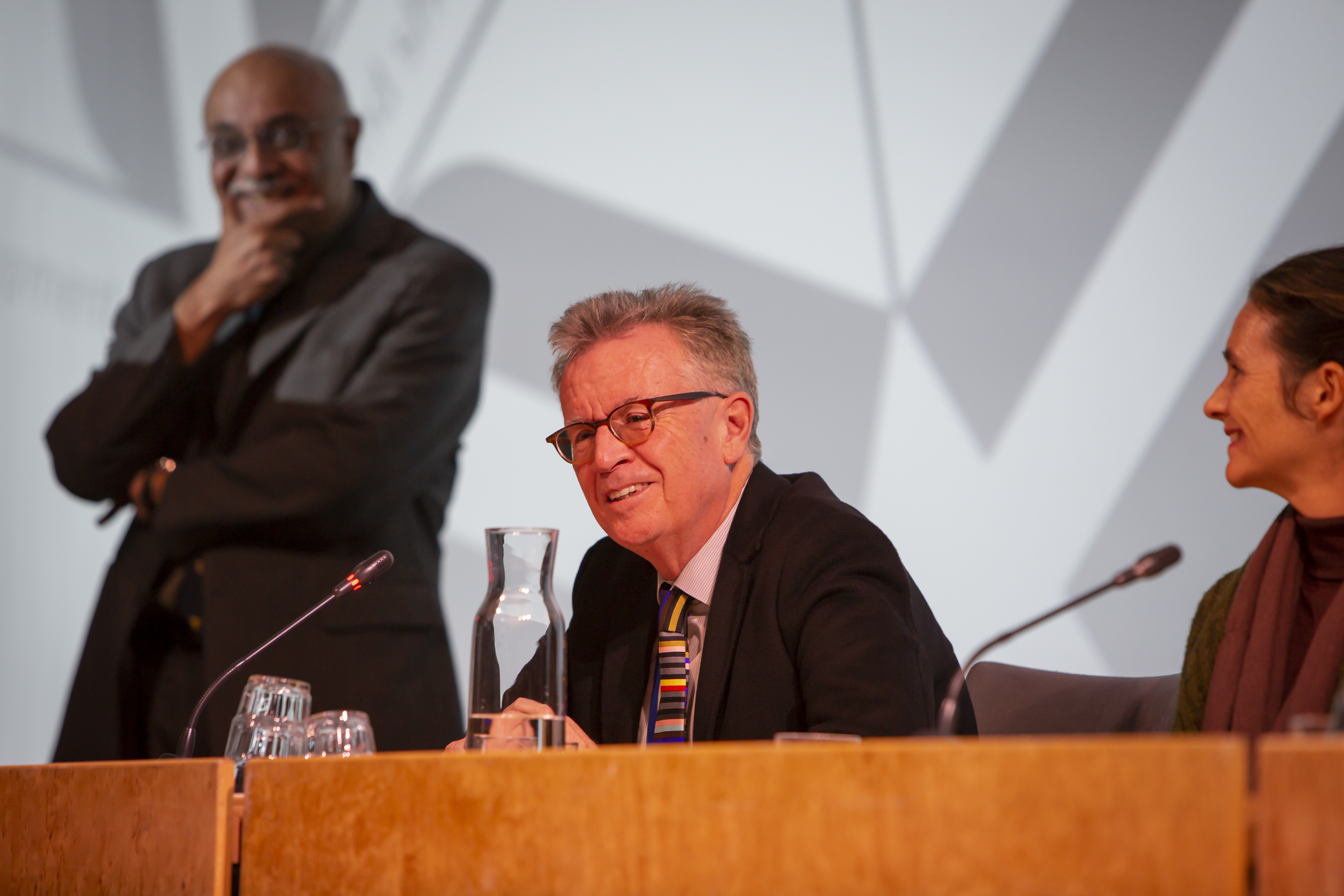Blog
Development policy in an era of robots
Views from the experts
Labour-saving technology in the form of robotic systems, artificial intelligence, and advanced computer networks may cause a rapid decline in global employment. That has economists questioning their basic models, with big implications for global development.
From 13 September to 15 September the United Nations University World Institute for Development Economics Research (UNU-WIDER) hosted the Think development - Think WIDER conference in Helsinki, Finland. Over three days, participants from fifty-nine countries gathered at the Marina Congress Center to discuss the past, present, and future of development economics and the field’s role in addressing major global challenges.
Structural transformation
How economies develop is a process often referred to as 'structural transformation'. The term is often used in a general sense to express progress along some type of development trajectory. Reaching consensus on a more exact definition, though, requires that we agree on what the proper development trajectory is.
 Conventionally, that trajectory involves some sort of a transformation away from labour-intensive production and towards capital-intensive production. For example, the Nobel-prize-winning economist Arthur Lewis outlined a two-sector model of structural transformation in 1954. In his model, the economy consists of an agricultural sector and an industrial sector.
Conventionally, that trajectory involves some sort of a transformation away from labour-intensive production and towards capital-intensive production. For example, the Nobel-prize-winning economist Arthur Lewis outlined a two-sector model of structural transformation in 1954. In his model, the economy consists of an agricultural sector and an industrial sector.
Development occurs as the labor surplus in agriculture moves into the industrial sector, and the industrial sector grows. Initially, agriculture accounts for most economic output. Eventually though, industry becomes a larger share of total output than agriculture.
Today, the Lewis Model remains foundational to development theory, but it is contested. One of the reasons it is contested is that industrial activity requires a greater share for physical and financial capital than agriculture does, and less labor. As UNU-WIDER board chair Ravi Kanbur explained, to support the growth of industry, as the goal of development, also means to support the growth of the factor share of capital in economic activity at the expense of the factor share of labour.
In the past, development economists have mostly supported policies that push the economy in this direction. The assumption has normally been that the resulting growth would generate enough employment that, even though labour’s share declines relatively (as a share of national income), employment will rise in absolute terms.
That assumption has mostly held –until now. When that assumption looks like it might be wrong, development economists question the models.
Why robots mean more demand-side interventions
As the share of labour in global production declines, the economy may soon be characterized by high and growing levels of unemployment coupled with stagnant wages. As Kanbur explained it, the argument for continuing supply-side interventions is weaker in this context.
Kanbur pointed out that it has often been assumed that there will be an infinite demand for goods, an assumption based on Says’ Law, which states that supply creates its own demand. Therefore, development policy should focus on increasing supply, which is accomplished by increasing the factor share of capital.

The assumption of near-infinite demand was especially strong when development was export-led, because producers were selling to an open, global economy. The early entrants to the global economy also did not face as much competition as new entrants do today. During periods of globalization, near-infinite demand is a decent assumption because the market is, well, global, and therefore big.
This assumption is no longer as valid because, as Benno Ndulu formulated it, global aggregate demand is intermediated by global income, a substantial proportion of which comes in the form of workers’ wages. When workers occupy a smaller share of production, they capture a smaller share of the value of production. Their incomes remain stagnant as a result, which may cause global demand to falter.
Supply-side interventions, in this new environment, may therefore be expected to prove increasingly futile. If so, then how does expanding a country’s manufacturing capability work if there is nobody to buy the outputs?
On this subject, Ann Harrison simply noted that there is no longer a divide between low-wage workers and high-wage workers, which is maybe still the standard anti-globalization line from workers in the USA that might feel, for example, that cheap labor in East Asia destroyed Detroit. There is no longer a divide because 'now it is all workers versus labour-saving technology [robots]'.
Martin Ravallion spent much of his fascinating conference session telling us why this might be good news and not bad news. The analysis goes like this:
In an environment of lacklustre aggregate demand, policymakers need to focus on demand-side interventions, which is to say, they will have to focus on increasing the incomes of the consumers that drive global demand. Since the private sector relies on sustained high levels of demand, doing this is pro-markets and pro-growth.
That means we could see the emergence of a strong pro-market consensus that it is good policy to universalize access to basic rights and services like food, housing, and health, to consider policies like a universal basic income or share, and to do more to reduce poverty and inequality.
Reducing inequality will be crucial
Inequality specifically was a major theme throughout the conference. Ravallion opened his talk with the assertion that it is time to focus more on reducing inequality. He noted that while there has been a broad consensus around poverty reduction, no such consensus exists around questions of inequality.
 Jonathan Ostry (IMF research staff) explained that inequality reductions have long been considered a trade-off with efficiency, the corollary of which is economic growth. Economic growth, rather than redistribution, has long been the consensus strategy for fighting poverty, even though empirical evidence shows that redistributive transfers also reduce poverty.
Jonathan Ostry (IMF research staff) explained that inequality reductions have long been considered a trade-off with efficiency, the corollary of which is economic growth. Economic growth, rather than redistribution, has long been the consensus strategy for fighting poverty, even though empirical evidence shows that redistributive transfers also reduce poverty.
Ostry quoted the Nobel Laureate Robert Lucas, as the example of this traditional view. Lucas once wrote that 'it is poisonous [to the economy] to focus on redistribution'. But Ostry’s own research shows that redistribution does not harm growth. Far from being 'poisonous', redistribution is, 'at worst benign'.
On the other hand, persistent and growing within-country inequality has been shown to reduce growth and the sustainability of growth. Inequality also weakens the political stability of countries, promotes the rise of nativist political parties, and helps to fuel insular and anti-growth policies as a function of that political economy.
The overall message from our experts seemed to be that redistributive policy could be a pro-growth policy option and a go-to solution for lagging aggregate demand, as countries around the world see their continued prosperity being threatened by ongoing relative declines in the purchasing power of the global consumer class. All that as the result of, well, robots.
The views expressed in this piece are those of the author(s), and do not necessarily reflect the views of the Institute or the United Nations University, nor the programme/project donors.
 Join the network
Join the network
